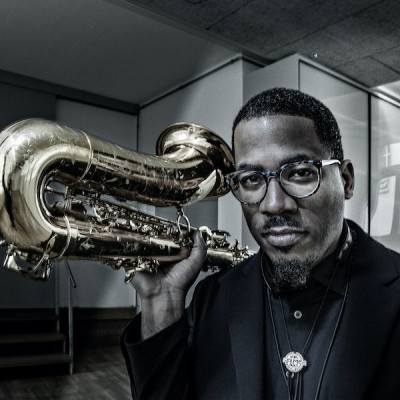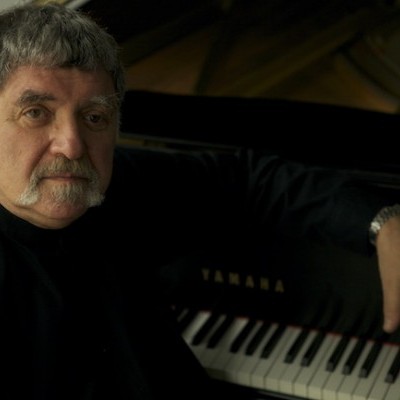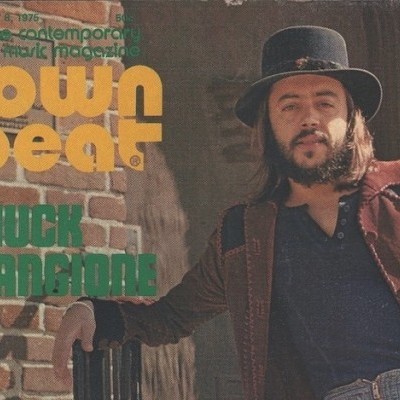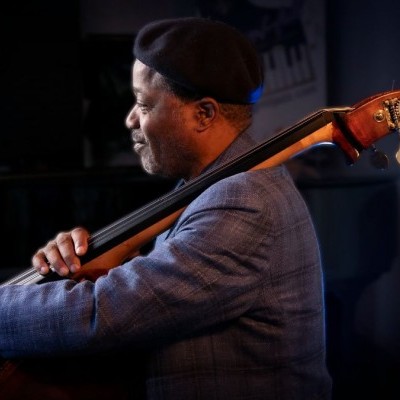Jul 17, 2025 12:44 PM
DownBeat’s 73rd Annual Critics Poll: One for the Record Books
You see before you what we believe is the largest and most comprehensive Critics Poll in the history of jazz. DownBeat…

Robert Cray recorded his latest album, That’s What I Heard, at the Capitol Records building in Hollywood.
(Photo: Mark Sheldon)“When Steve suggested that we do a gospel tune, I just went back to my records and pulled that one out. I played it for them, and everyone just fell right in like they knew it.”
Despite his relative neophyte status as a gospel singer, Cray said, “I’m influenced by a lot of gospel-influenced singers. About my favorite singer is a guy by the name of O.V. Wright. He sang with the Sunset Travelers, a gospel group. I like him because of the fact that he comes from church and he can sing a ballad like nobody’s business, and just take you on a journey with him from the start.”
Once in the studio, Cray abides by the venerable method of recording live with the band, in real time, eschewing digital manipulation or excessive overdubbing. Asked to describe his approach in the studio, Cray said, “You do it and then you have to tell yourself to walk away. To me and Steve, that’s how we like to work it. You can’t really go for perfection. You go for performance.” With a chuckle, he added, “You’d be searching forever looking for perfection.”
Cray’s real-time/real-feel insistence is part of the common ground he shares with Jordan, as musician and as producer. “Steve is all about the vibe. Because he’s an active musician, he knows how to set the vibe. He knows how to get everybody onto the same page in the studio.
“When we did the Hi Rhythm record, I had met some of the guys from Hi Rhythm, and Steve played drums on it. When we got to Willie Mitchell’s studio, Steve goes immediately behind the drum kit and starts playing. Everybody just fell in. No idea what we were doing, but just fell in, and for 20 to 25 minutes, there was just steady playing. And that’s how he got the vibe going.”
Jordan’s assessment of Cray illustrated the mutual admiration: “First of all, [Robert is] a wonderful human being. He’s a joy to be around and I’m happy to call him a very dear friend. And he happens to be incredible, as a musician and as a singer. Guitar players want to hear guitar solos, but I think of him as a singer first. When I work with him, I focus on getting the right songs for him to sing, not the right songs for him to play.”
As both guitarist and singer, Cray laid the groundwork of his blues obsession during his teen years. Was he, in fact, a blues snob, to the exclusion of pop music of the day? “I think so, initially,” he said with a slight smile, “because of the fact that I played guitar and was a big fan of people like Albert Collins and B.B. and all. Then, with the r&b stuff, that’s all we wanted to do—play r&b and blues.
“When I grew up, I listened to music my parents were playing, especially in the early ’60s. We lived in Germany for two-and-a-half years. My dad was in the military and he was stationed in Munich, Germany. My parents had bought this great big Grundig console, with the tape deck, record player, short-wave radio and all that stuff. We bought records all the time at the [Post Exchange, a U.S. Army base retail store]. In the early ’60s, they bought jazz and blues, r&b and soul, all that stuff. So, I listened to all that.
“When we moved back to the States in the early ’60s [to Tacoma, Washington], the Beatles came out and radio changed. I was a big fan of the Beatles, and still am. As 15- and 16-year-old kids, we got the blues bug. That just became the focus, and I shut out everything else. Then it wasn’t very long afterwards, I listened to Otis Redding records and stuff like that again, and let everything else back in. But for a short while, we just absorbed all we could by listening to records by the blues people and seeing those people.”
By the late ’80s, Cray was part of the rootsy vanguard of young, hot blues guitarists, alongside fellow Stratocaster blaster Stevie Ray Vaughan, helping to usher in a new emphasis on blues and roots music in major label/mainstream avenues. “That was a special period,” Cray said. “MTV helped a lot, too. Epic signed Stevie. That’s how record companies go. One record company gets theirs and then the next one’s gotta get theirs. But it was fine, because we got selected, so that was good for us.
“At the time, there was this revival of roots music. Los Lobos was signed, and The Blasters were signed. There was a big resurgence going on. The rockabilly thing was happening. So, it was a good time for more roots-oriented music.”
Tragedy struck when Vaughan and four others were killed in a helicopter crash on Aug. 27, 1990, only hours after Cray’s band had played with him at Alpine Valley Music Theatre in East Troy, Wisconsin. At the time, Cray and his bandmates had been friends with Vaughan since the late 1970s. “We hadn’t seen [Vaughan] for a half a year or so,” Cray recalled. “It was a good time backstage, reminiscing, talking with everybody. Stevie and Jimmie were just coming out with the Vaughan Brothers album [Family Style]. Everybody was rolling. We were on major labels and all that stuff. And then we lose Stevie. It was really rough, really sad.”
On a more positive note, Cray said he appreciated “the one thing that having had the major label success has done for us: It has put us in the eyes of people in different parts of the country and outside of the country, too, so we can do the live shows.”
By this point, Cray’s songbook has grown to massive proportions, making the task of devising a setlist rather complicated. “Now,” he said, “it’s a matter of trying to remember them all. You try to warm up some of them at sound check. Sometimes, you just take a chance. I always say to the guys, ‘No guts, no glory.’ If we make a mistake, we laugh it off.”
That’s What I Heard represents another entry in the ongoing Robert Cray story, and one with a retrospective emphasis.
“I look at it as a reflection of a lot of the different stuff that we like, and that covers a lot of bases,” the guitarist said. “There’s no down-and-dirty blues on it, though. That’s one thing. But that’s for another record.”
Could that fact alienate the more hardcore blues fan contingent?
“I don’t think about that,” Cray said. “We’ve gotten knocked a lot for that, but at the same time, Strong Persuader wasn’t a blues record, either. We are who we are. We play blues, but we play rhythm-and-blues, as well. I don’t think about having a record that covers all the bases. We do what we do. If you try to please everybody with your recordings, you hurt yourself. I think you have to be who you are and do what you do, when you do it.” DB

James Brandon Lewis earned honors for Artist of the Year and Tenor Saxophonist of the Year. Three of his recordings placed in the Albums of the Year category.
Jul 17, 2025 12:44 PM
You see before you what we believe is the largest and most comprehensive Critics Poll in the history of jazz. DownBeat…

Galper was often regarded as an underrated master of his craft.
Jul 22, 2025 10:58 AM
Hal Galper, a pianist, composer and arranger who enjoyed a substantial performing career but made perhaps a deeper…

Chuck Mangione on the cover of the May 8, 1975, edition of DownBeat.
Jul 29, 2025 1:00 PM
Chuck Mangione, one of the most popular trumpeters in jazz history, passed away on July 24 at home in Rochester, New…

“Hamiet was one of the most underrated musicians ever,” says Whitaker of baritone saxophonist Hamiet Bluiett.
Jul 8, 2025 7:30 AM
At 56, Rodney Whitaker, professor of jazz bass and director of jazz studies at Michigan State University, is equally…
Jul 17, 2025 11:35 AM
The DownBeat Critics Poll provides a wonderful snapshot of the jazz scene today, with much to explore and many great…